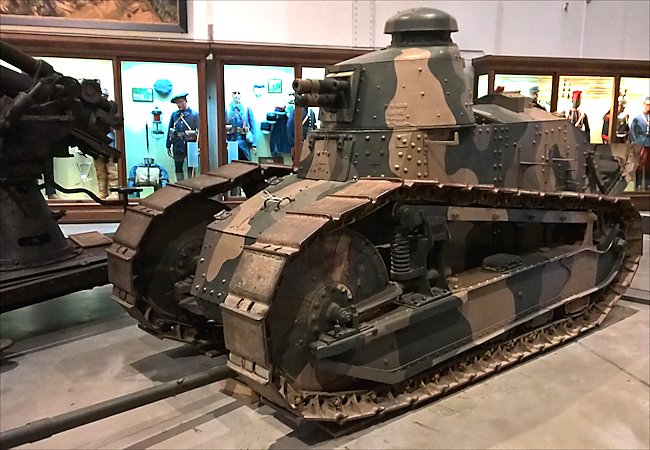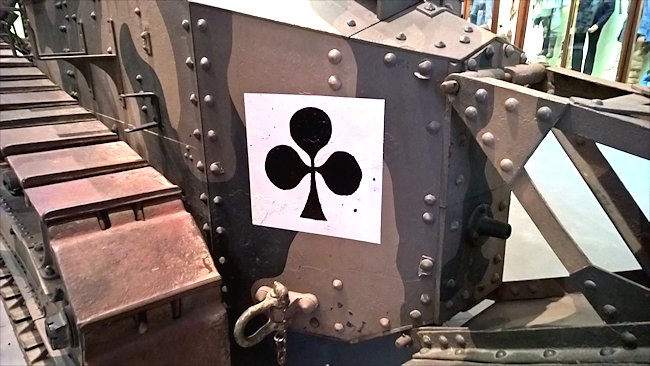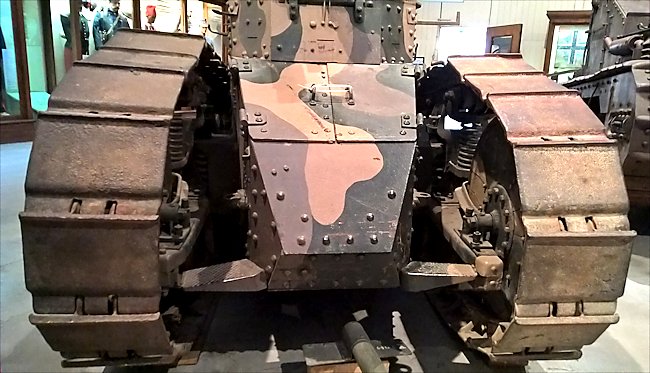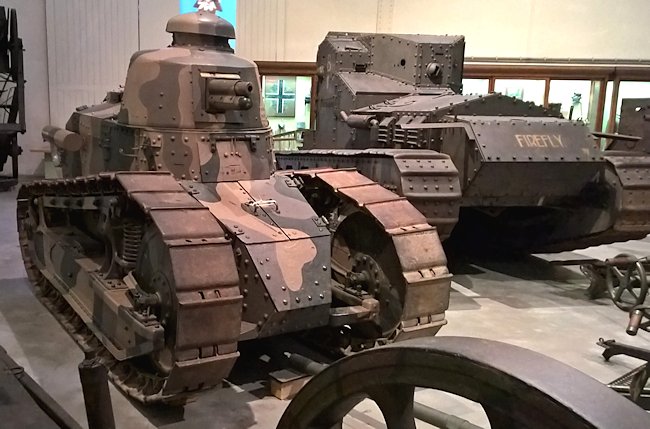The Renault FT17 Tank
This Renault FT17 Tank can be found at the Belgium Tank Museum in the Royal Army and Military History Museum, Jubelpark 3. Brussels.

Renault FT17 Tank at the at the Belgium Tank Museum in the Royal Army and Military History Museum in Brussels.
The Belgium Army's Renault FT tank
The Belgian army had 75 Renault FT tanks of World War I vintage at the start of World War II. The Belgian Army had two types of FT tanks, the Char canon armed with a short 37 mm Puteaux SA-18 gun and the Char mitrailleuse armed with a machine gun. They formed the Belgium Army's first tank unit in the 1920's. It was attached to the infantry. Unlike the French Army, the Belgian Army had withdrawn all FT tanks from front line service before World War II.
In the 1930's they had been reassigned to the Gendarmerie for territorial defense. This happened with most ex-army armour in Belgium. They remained in storage depots during the May 1940 campaign. A lot of these Renault FT tanks were scrapped after the war or used as 'hard targets' on military firing ranges. None have survived. This particular tank was part of an exchange with the French Tank Museum in Saumur.
The development of the Renault FT tank
It is now hard to imagine a tank without a turret. The first tanks in World War I did not have turrets. The weapons in the first tanks were mounted in the hull, the forecastle, or in sponsons that are special bulges on the side of the tank. The layout was modelled directly on battleships. These types of gun mounts afforded each type of weapon a limited firing angle. Several cannons or machine guns had to be mounted so a full arc of fire could be achieved without the driver having to turn the hull.
The French during world war one had designed and manufactured two heavy tanks; the Schneider CA1 and the St Chamond. Both were disappointing but their design for a new light tank change the way tanks would be built for the next hundred years. The Renault FT had a new revolutionary feature. A turret that had a full 360° rotation. The cannon and machine-gun could fire in any direction.

Renault FT17 Tank at the Belgium with Ace of clubs unit markings
Renault were not the first to place a turret on an armoured vehicle. Rotating turrets containing machine guns, cannons or multiple weapons had been fitted to the top of armoured cars for a couple of years. The British tank designers had unsuccessfully tried to mount a turret on top of their heavy tank prototype called Little Willie in 1915. Renault were the first to make a mass produced tank with a rotating turret.
Such a system had great advantages over a sponson mounted cannon or machine-gun. The idea to mount turrets on tanks was also borrowed from warship design. The location where the turret is mounted, normally on top of the upper chassis is called the turret platform. It is basically a big bearing. It consists of a static ring on the hull and a moving ring on the turret. Balls or rollers are placed between the two rings and the turret rolls on them.

Drivers position on the Renault FT17 Tank. The tracks were wide to give good cross country performance on boggy ground.
The turret platform has to be strong enough to hold the weight of the turret and keep it in place. It has to be strong enough to cope with the forces of gun recoil, in packed with obstacles and tank tilting as it go up and down slopes at speed.
The means of turret rotation evolved over time. In the first tanks like the Renault FT, turrets were turned by the strength of the tank crew turning handles. Many tanks during World War II also had manual turret turning controls. Later these hand cranks were replaced by electrical and hydraulic controls that could turn the turret much faster.
As a result target location and fire control improved. Nevertheless the manual drive control system did not go away. It was always used as a backup in case the automatic system failed. Even in a modern tank the crew can turn the turret using manual controls if the motorised system fails.

Renault FT17 Tank next to a British WW1 Ferret tank called Firefly.
WW2 tank books

